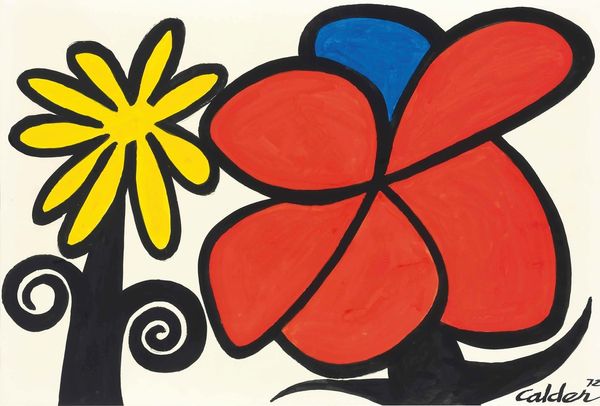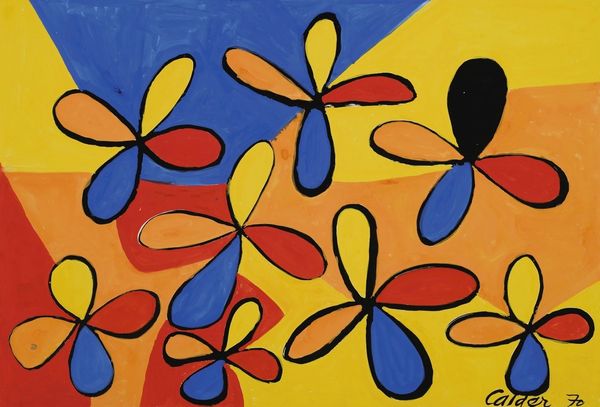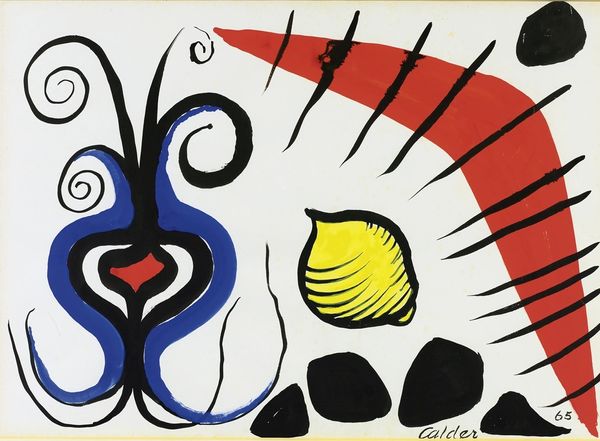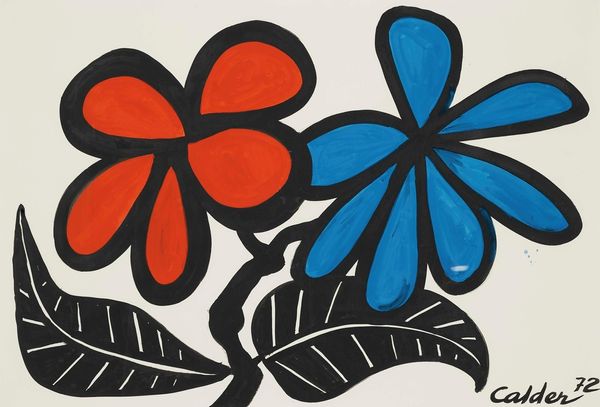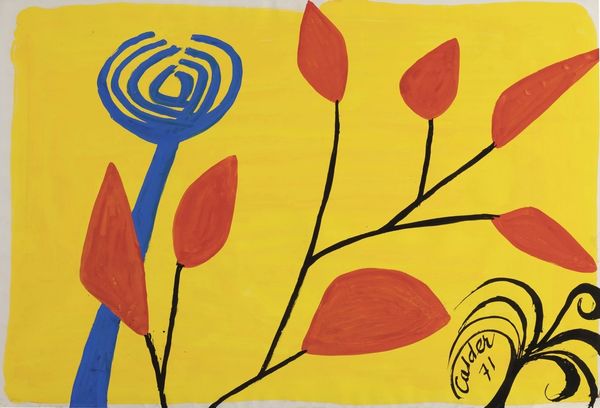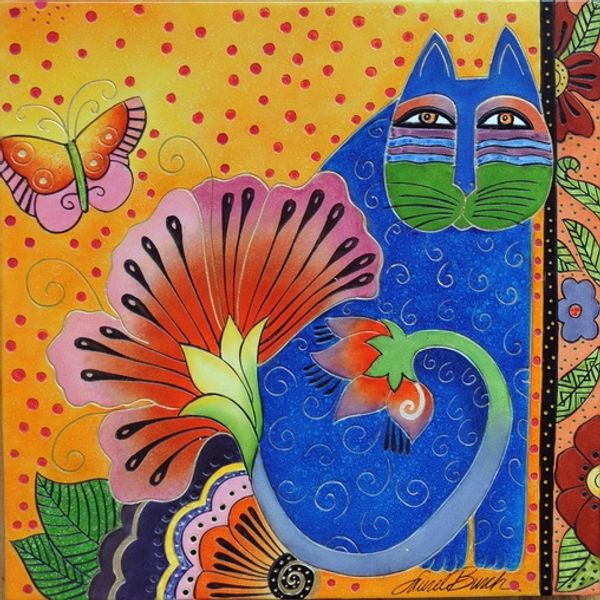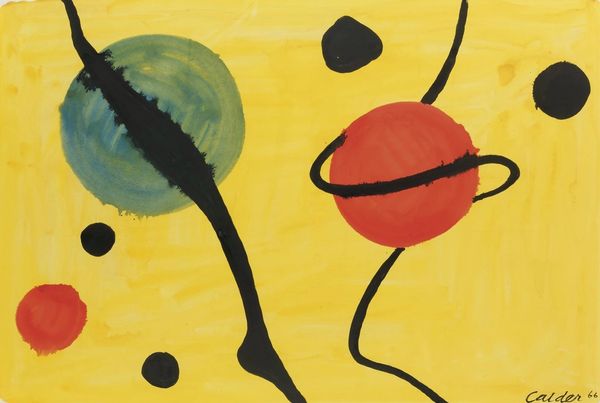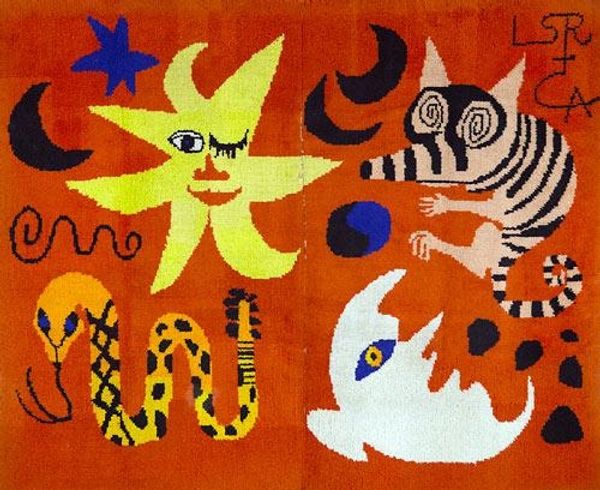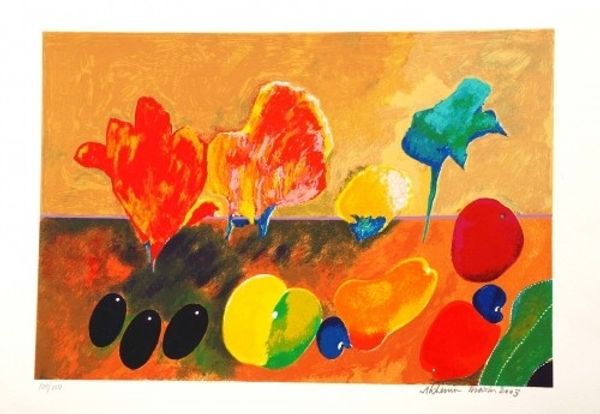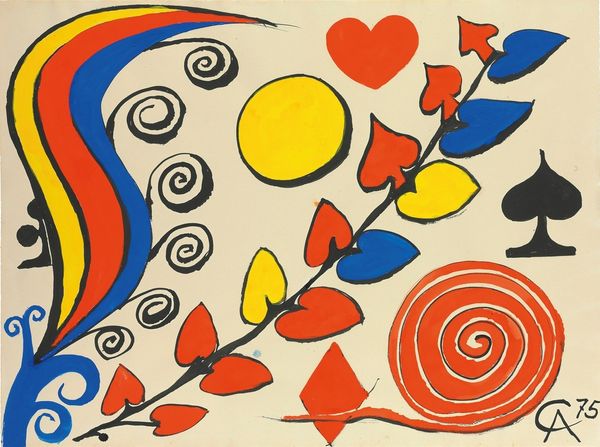
painting, acrylic-paint
#
pop art-esque
#
painting
#
pop art
#
acrylic-paint
#
figuration
#
form
#
geometric
#
pop-art
#
line
#
modernism
Copyright: Modern Artists: Artvee
Curator: Alexander Calder's 1968 acrylic painting, "Blue-Eyed Butterfly," presents us with a vibrant, seemingly whimsical composition. Editor: Whoa, it’s like a child's drawing exploded with color. Butterflies, snails, squiggles—what's not to love? The orange and yellow… sunshine on overdrive, right? Curator: Indeed. Let’s examine how Calder employs line and form here. Notice the simplified, almost cartoonish rendering of the butterflies. The lines, bold and black, delineate their forms against the gradient backdrop. This interplay generates a dynamic tension. Editor: I love that the butterflies all seem to have distinct personalities, from the bold striped one to the shy, blue one hiding in the corner. The eyes are striking. Are they really looking at something, or are they just there to unsettle? Curator: Semiotically, the eyes could function as focal points, drawing the viewer in. But more broadly, Calder subverts conventional representation, opting for symbolic gesture rather than strict imitation. This flattening, typical of the period, questions the idea of mimetic accuracy. Editor: Subverts, huh? For me it's more like... he just woke up one morning and felt like playing. It's not deep or challenging; it's just… joyous! What’s that one little worm slithering along supposed to mean? Curator: Its inclusion alongside the butterflies and snails might represent a miniature ecosystem—an allegorical snapshot of natural order, playfully reconfigured. Its juxtaposition provides an amusing dialogue about form and space. Editor: I don’t know about all that, but if it brings me back to staring at bugs when I was seven, then I reckon it worked its magic on me! I guess the simplified forms make it really approachable, fun! Curator: An astute observation. The interplay of form and color, combined with a Pop Art aesthetic, achieves that sense of uninhibited imagination. Calder invites us to engage with this visual language, both on a playful and intellectual level. Editor: Absolutely. This makes you wonder what kind of bizarre creature he'd paint next.
Comments
No comments
Be the first to comment and join the conversation on the ultimate creative platform.
